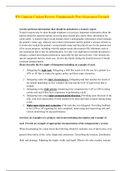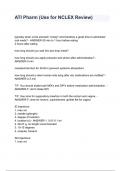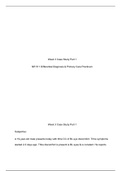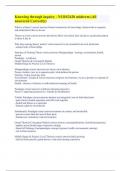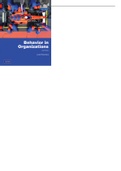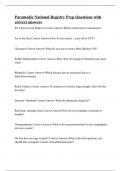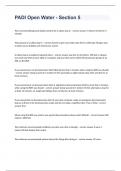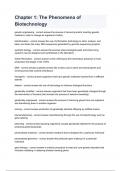Trenholm
7th edition, Chapter 1 – 13 (most important tables
included)
Chapter 1: The communication tradition
Study of communication was called rhetoric, teachers of communication were
rhetoricians.
Short history of rhetoric and communication theory:
• Classical period (500 B.C. – 400 E.C.) public communication became
an important tool for problem solving because of the Greek democracy.
The first known communication model, the canons of rhetoric, can be
divided into five parts: invention, arrangement, style, memory and
delivery. Classical rhetoric emphasized credibility, ways to ground
arguments and audience analysis. (Plato, Socrates, Aristotle (Lyceum and
Peripatetic School (from peripatos, walkways, focus on persuasive
rhetoric)), Cicero, Quintilian) Physical activity was important to education,
teachers of philosophy and rhetoric shared space in the public gyms with
teachers of physical culture and military arts.
According to Aristotle a speaker can sway an audience in three ways:
through personal character (ethos), through the ability to arouse emotions
(pathos) and through the wording an logic of the message (logos).
, • Medieval Period and the Renaissance (400 – 1600) Rhetoric
became secondary to theology because of monolithic Christianity. Letter
writing and preaching were major rhetorical acts. Rhetoricians emphasized
methods of embellishing and amplifying rhetorical style. (Augustine,
Cassiodorus, John of Salisbury, Erasmus)
• Modern Period (1600- 1900) Public rhetoric was major force in
determining public policy. Written word was important medium as books
and newspapers became more available. Rhetoric followed four paths:
classical rhetoric revived the work of the ancients.
Psychological/epistemological rhetoric investigated receivers’
psychological responses to persuasive messages. Belletristic rhetoric saw
written and spoken communication as art and developed theories of
rhetorical criticism. Elocutionists focused on developing elaborate rules for
delivery. (Francis Bacon, René Descartes, John Locke, Fénelon, Lord
Kames, George Campbell, Joseph Priestley, Thomas De Quincey)
• Contemporary Period (1900 – present) Communication study took
two parts: rhetoricians used humanistic methods to analyze rhetorical
effects of public discourse. Communication theorists used scientific
methods to analyze communication behavior as a social science.
Communication study expanded to include interpersonal and group, as
well as public, communication. The rise of electronic media signaled
additional changes in communication study.
Classical period
Corax and Tisias were the first rhetoricians. They illustrate clearly that the study
of communication is always prompted by practical problems. The rhetoric taught
by the Greek philosophers is directly linked to the rhetorical taught in modern
communication courses. Communication study was important for three reasons:
1. Oral expression was the major source of entertainment, and ornamental
speech was greatly admired.
2. Greeks emphasized persuasion and argumentation (very helpful in the
democracy). Public debate and argumentation skills were the key to public
notice.
3. Long time there was a ban on professional lawyers, to argue their cases
successfully, the citizens had to have forensic skills. In response to this practical
need, the Sophists (group of itinerant teachers) began to ply their trade. They
learned the citizens to speak professionally (tricks and persuasive speaking for
use in the law courts). The Greek and Roman philosophers were more theoretical
(and ethical) than the Sophists.
Cicero, Roman politician, was Rome’s finest orator. By the time his works were
published, the study of rhetoric had stabilized into five major topic areas: canons
of rhetoric. Canons divide communication into five parts:
• Invention: process of deciding on the subject matter of one’s speech and
of discovering information and arguments that would lead to sound
conclusions.
• Style: process of selecting the proper words to convey a message. Plain
style (built ethos), middle style (logos) and vigorous style (pathos).
• Arrangement: ways to order ideas effectively.
• Memory: ability to hold content, style and arrangement in one’s mind
(important!). Method was to visualize a villa with the main ideas of the
speech situated in each room (by Simonides).
, • Delivery: necessary for success because if the speaker did not use a
pleasing voice and graceful gestures, the effect of the speech would be
undermined (less important than other canons).
Quintilian defined rhetoric as the study of ‘the good man speaking well’.
Medieval period and Renaissance
With the fall of the Roman empire and the rise of Christianity, rhetorical study
declined. During the medieval period and the Renaissance, little insight was
added to classical thought. The goal of communication was no longer to discover
possible truth through debate but to instruct the faithful in certain truth, the
revealed ‘will of God’.
Letter writing was important because of the many kingdoms so it was necessary
to communicate over long distances. Preaching was also important, because it
was the duty of the Christian clergy to teach the word of God. Augustine, a major
Christian theorist, argued that it would be foolish for truth ‘to take its stand
unarmed against falsehood’. The preacher’s goal was to interpret the word of
God. Augustine believed that people communicate through signs (something that
causes something else to come into the mind as a consequence of itself). Natural
signs (e.g. smoke) are created by God, conventional signs (spoken/written word)
are arbitrarily created by humans, and their interpretation is more difficult. For
Augustine, communication was a process of ‘drawing forth and conveying into
another’s mind what the giver of the sign has in his own mind’.
Modern period
During this time, new attitudes towards knowledge revitalized the study of
rhetoric. The world became more secular, and a new emphasis on men’s and
,women’s ability to determine the truth rationally and independently took hold.
Rise of scientific method meant that ideas and arguments should be empirically
grounded (based on observation). Rise of nationalism and democratic forms of
government gave new importance to the practice of rhetoric.
Douglas Ehninger identifies four directions of rhetorical study during the modern
period:
• Classical approach
• Psychological/epistemological approach (find scientific basis for study of
human communication)
• Belletristic approach
• Elocutionary approach
Francis Bacon identified four ‘idols’ or distortions that get in the way of clear
thinking. ‘Idols of the Tribe’ refer to fallacies in thinking due to human nature.
‘Idols van the Cave’ are the individual prejudices we bring with us because of our
own backgrounds and personalities. ‘Idols of the Market Place’ are social in
nature and center on imprecise use of language. ‘Idols of the Theatre’ are
fallacies that occur when we accept fashionable ideas uncritically. We should be
guard against these prejudices and distortions in our own thought and speech
and in those of others. The only true protection is to be as scientific as possible,
grounding knowledge in empirical observation and rational thought, and
expressing thought in clear, unadorned language.
Other modern thinkers also thought that way. Those ideas were picked up by
George Campbell and he combined them with the teaching of the classical
rhetoricians. One of his ideas concerned the relationship between speaker and
audience.
The rhetoricians who took a belletristic view were less interested in the
psychology of communication than in problems of style and eloquence. The
elocutionist focused their study of communication on the canon of delivery.
Communication today
In contemporary departments, two approaches to the study of communication
are evident: the rhetorical tradition and the more scientific approach to the study
of communication. The scientific method is a belief in controlled laboratory
experimentation and careful, objective measurement. Those two approaches can
be combined. Although their methods may differ, rhetoricians and
communications scientist address similar questions. Both want to understand
how communicators affect each other as they interact. Source credibility is the
extent to in which a communicator is considered believable and competent.
Although their methods may differ, rhetoricians and communication scientists
address similar questions. Both want to understand how communicators
affect each other as they interact.
Rhetoricians have studied the rhetoric of films, television, social movements,
political speeches, policital newscasting, cartoons, popular music,
pshychotherapy, painting, architecture, and even science. Communication
scientist have studied how communication affects the development and
maintenance of one’s self-image, how message variables affect the way we
process and understand information, the factors that lead to attitude change,
how interpersonal relationships form and dissolve, how small groups make
effective and ineffective decisions, how complex organizations use
, communication to function effectively, how the media affect audience responses,
and the like.
Chapter 2: Definitions, models and perspectives
Defining communication
Definiton: useful and logical place to start the exploration of communication.
Definiton comes from Latin word ‘to determine, bring to an end, or settle’. They
clarify concept by indicating their boundaries and focus attention on what is
important about whatever it is we are defining.

